The Meaning of the Ring, from Memento Mori to Marriage
Rings are one of the most personal and oldest human adornments, evolving in complexity with metalwork techniques and the gemstone trade.

Rings are one of the most personal and oldest human adornments, evolving in complexity with metalwork techniques and the gemstone trade. Treasures and Talismans: Rings from the Griffin Collection, now at the Cloisters branch of the Metropolitan Museum of Art, explores over 50 examples of rings from antiquity to the Renaissance, and their significance in love, devotion, and remembering mortality.
Those memento mori rings that date to the Renaissance are among the most spectacular of the Griffin Collection pieces, all on rare view from the private collection in the Cloisters’s stained glass-lined Glass Gallery. One diamond-encrusted skull from 17th century England opens to reveal a small ruby, representing that something beautiful thrives even in death. Another created in 17th-century Germany opens into two parts, with secret compartments on either side holding dual figures: a baby and a skeleton. An inscription reads: “What God has joined together, let no man tear asunder.”
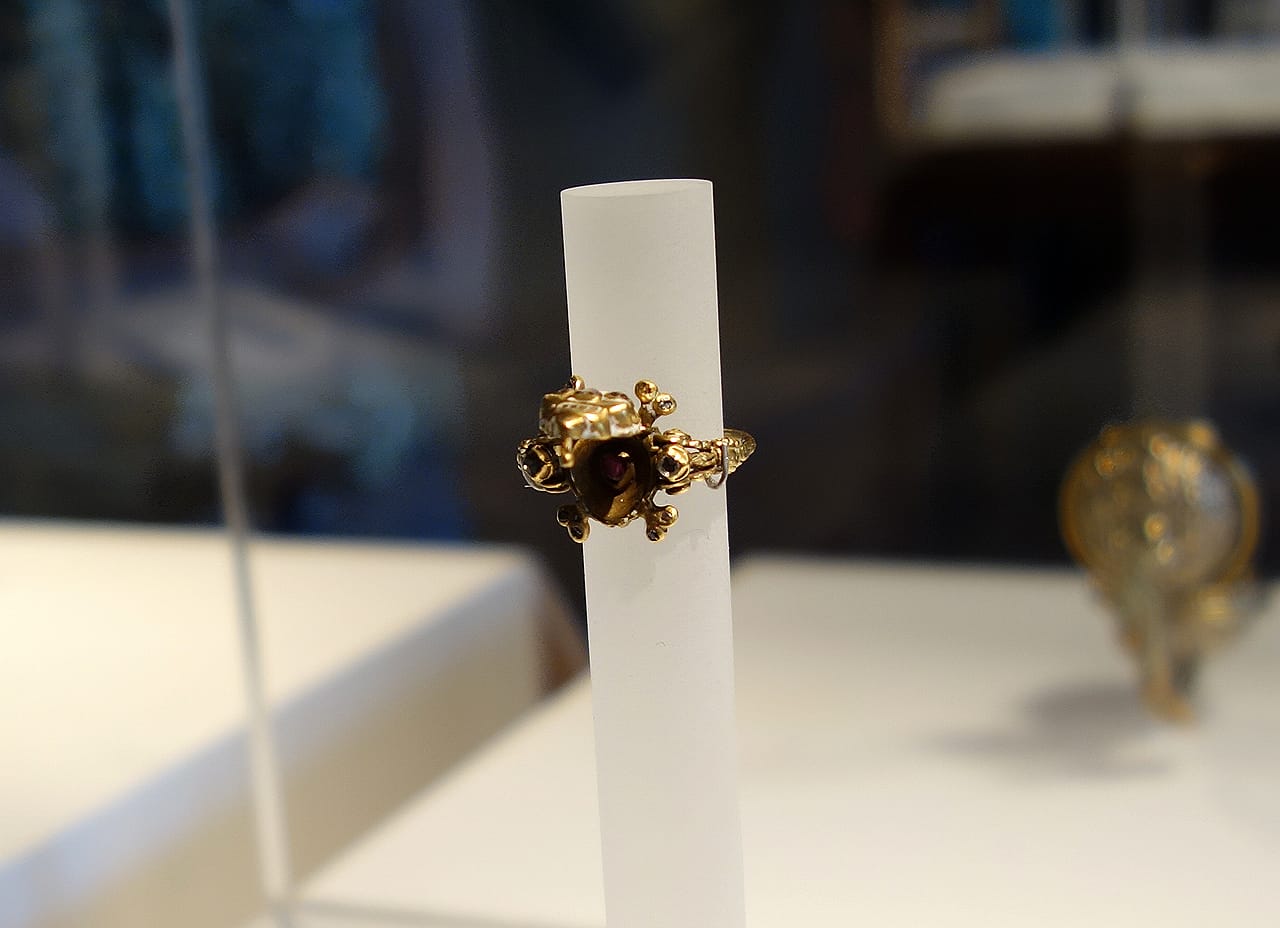
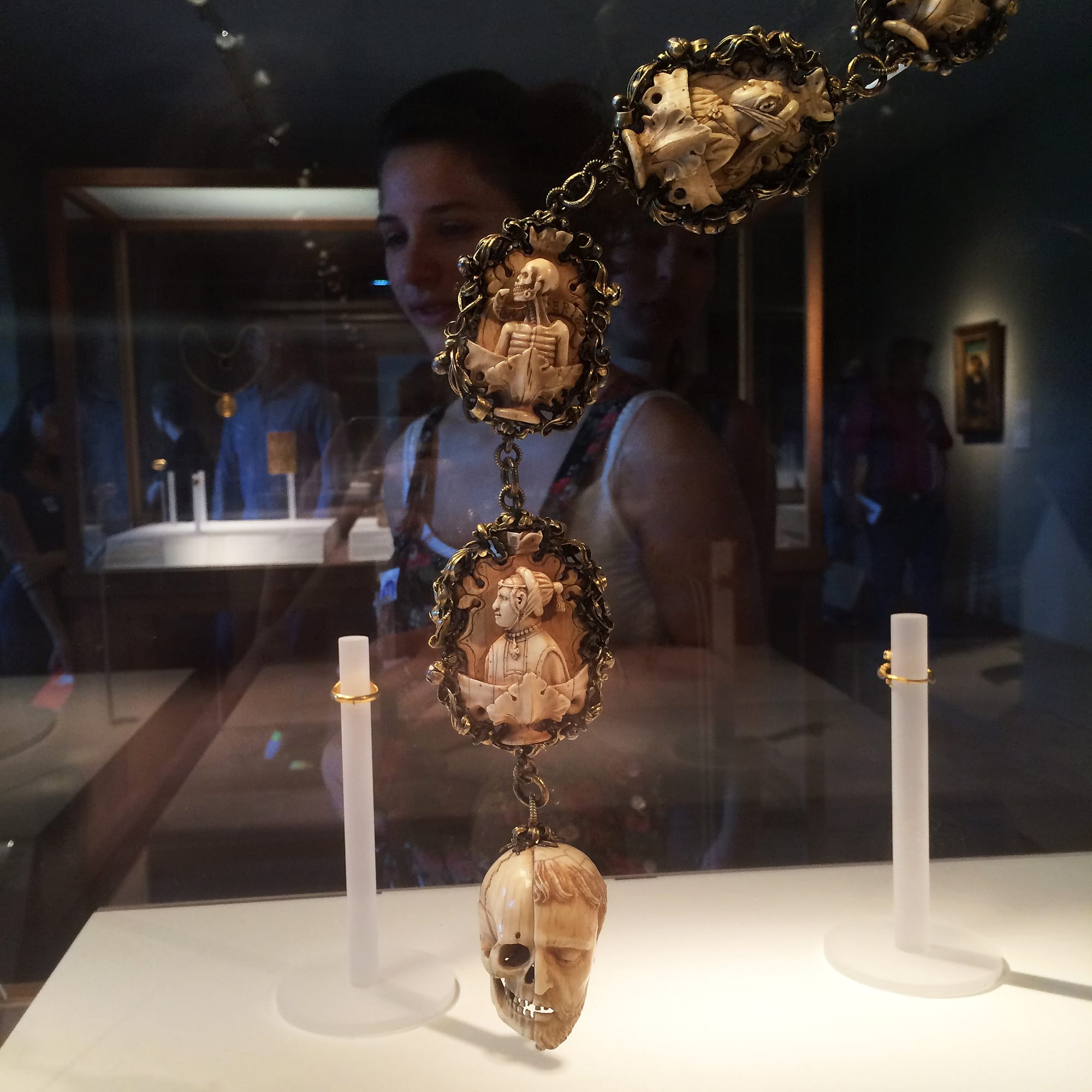

These reminders of death were meditative objects on the fleetingness of our material lives, a message perhaps a bit ironic when melded into gold and decked out in all the gemstones you could afford. Nevertheless, these pieces are among the most intricate in exploring the intimacy of rings. Similarly posy rings from the Elizabethan era have interior inscriptions known only to the wearer, often given by a friend or lover. Other rings were worn for sealing letters with signets, as signs of status, or even objects of faith, such as nine diamond rings from a Spanish convent, given as part of a novice’s dowry.

Treasures and Talismans, curated by C. Griffith Mann is equally interested in the history of goldsmithing as in these contemplative moments, encouraged through the careful illumination of each ring in the vitrines. Throughout, objects from the Met’s own collections join the rings to highlight their use in portraiture, and emphasize the craft of the metalworking trade. A 1449 painting by Petrus Christus shows a goldsmith in his shop, sitting at a bench with shelves stacked with jewelry and religious vessels, a well-dressed couple watching as he weighs a wedding ring.
Rings remain something of a personal talisman, worn close to the skin, whether a marriage band or something with more personal meaning. A diamond ring from Roman antiquity in the exhibition is not terribly different in its design from contemporary jewelry, although the gem held aloft by the gold structure is raw (cutting techniques came later in the 15th century) and was even more rare with almost all Roman diamonds journeying from India. It’s impossible to know what meaning it and the other rings had for their wearers, but each had some significance in personal identity, whether in celebrating life, or considering death.




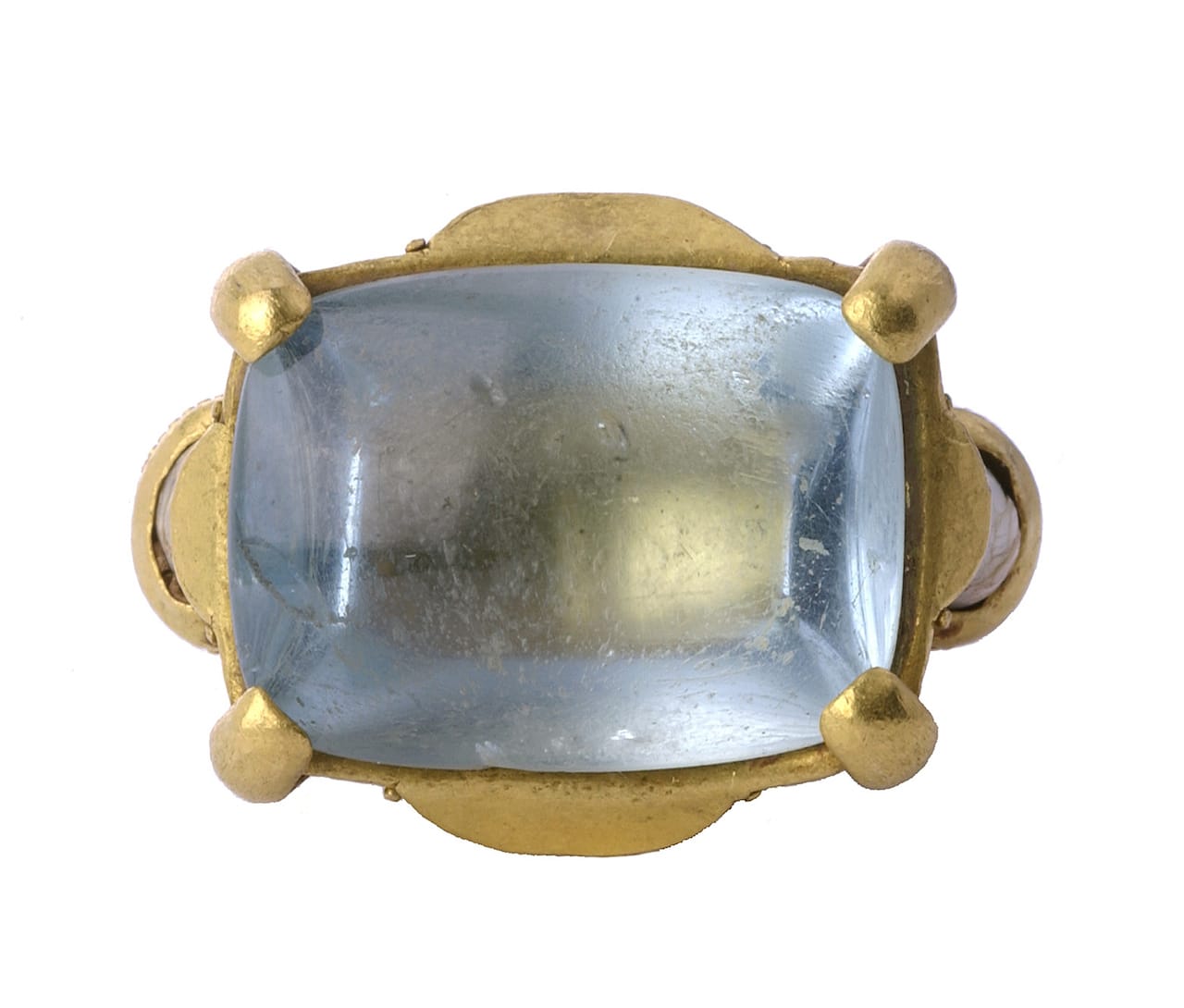

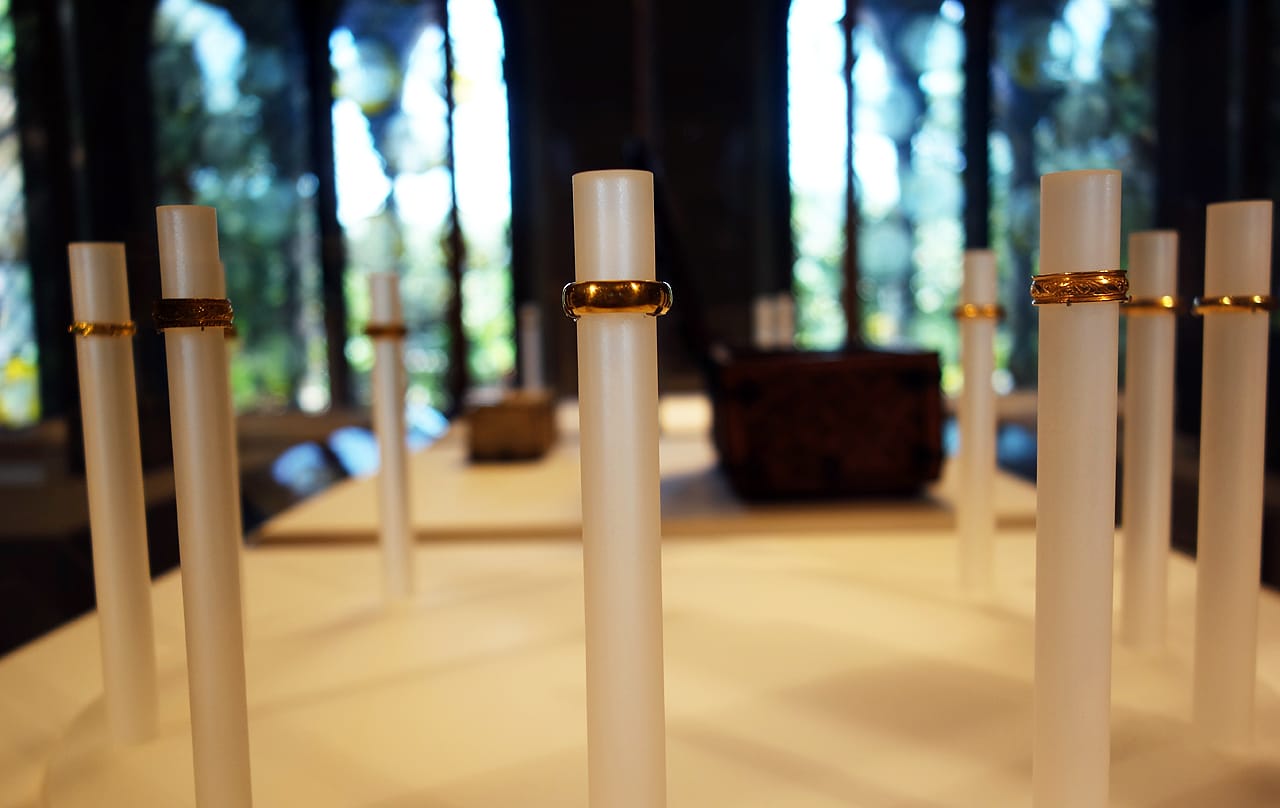
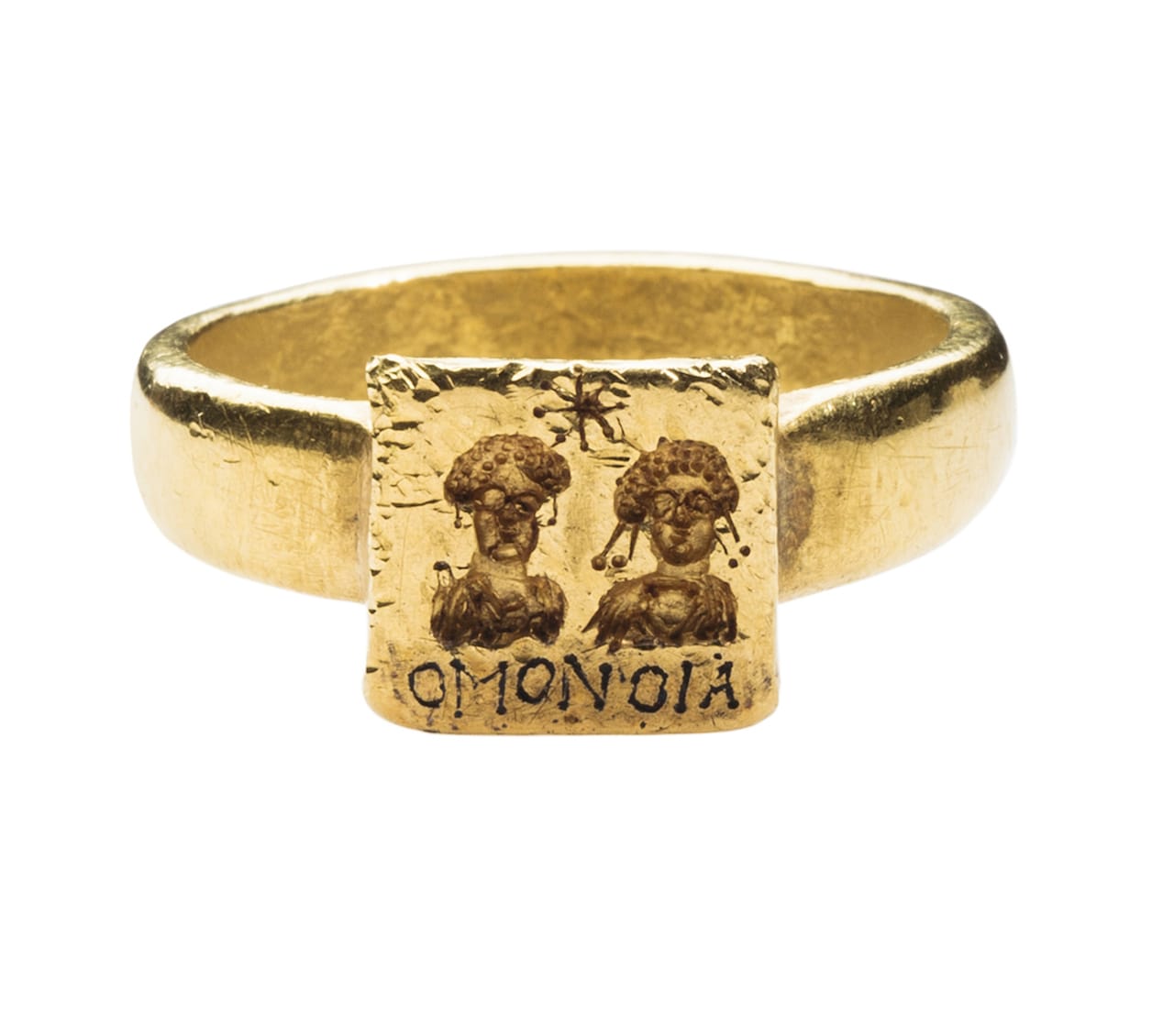
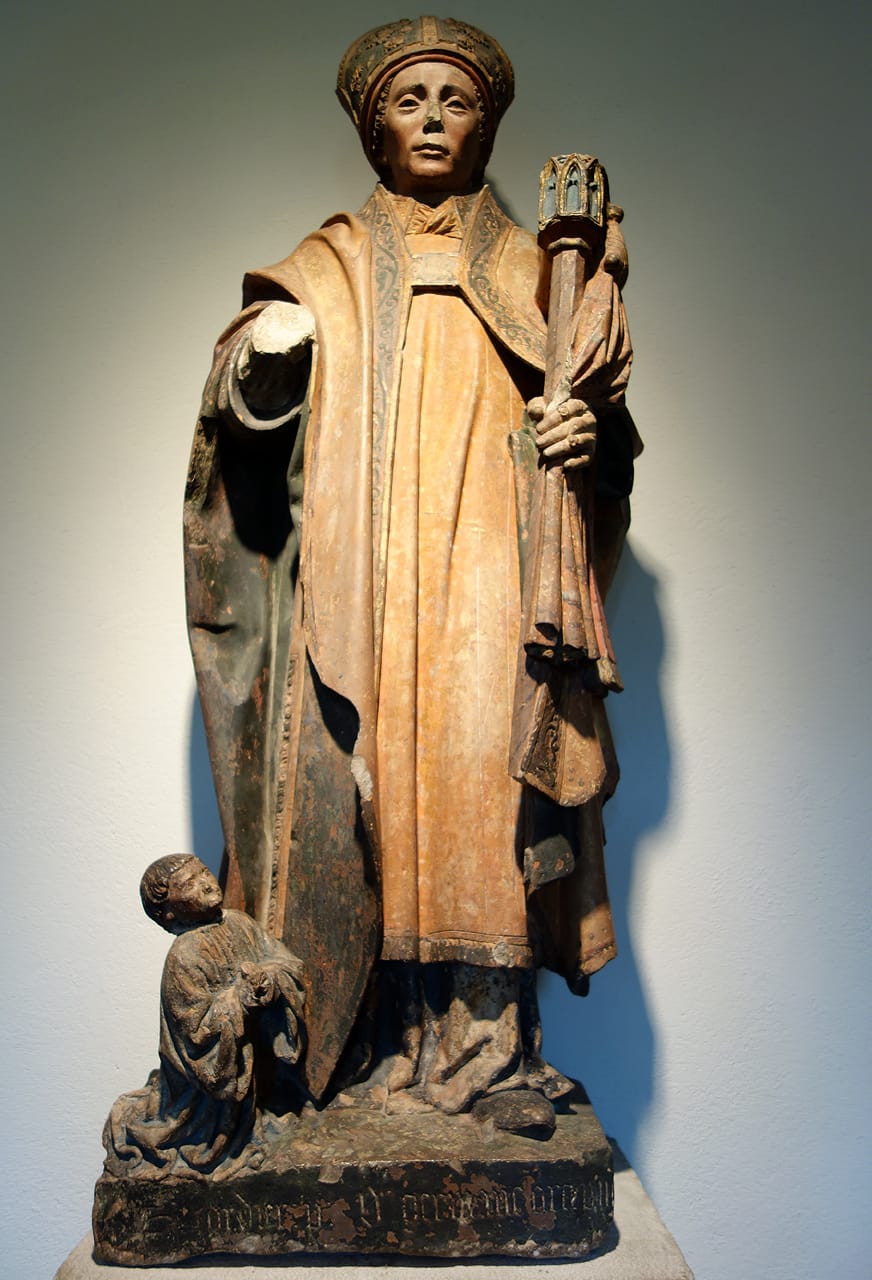
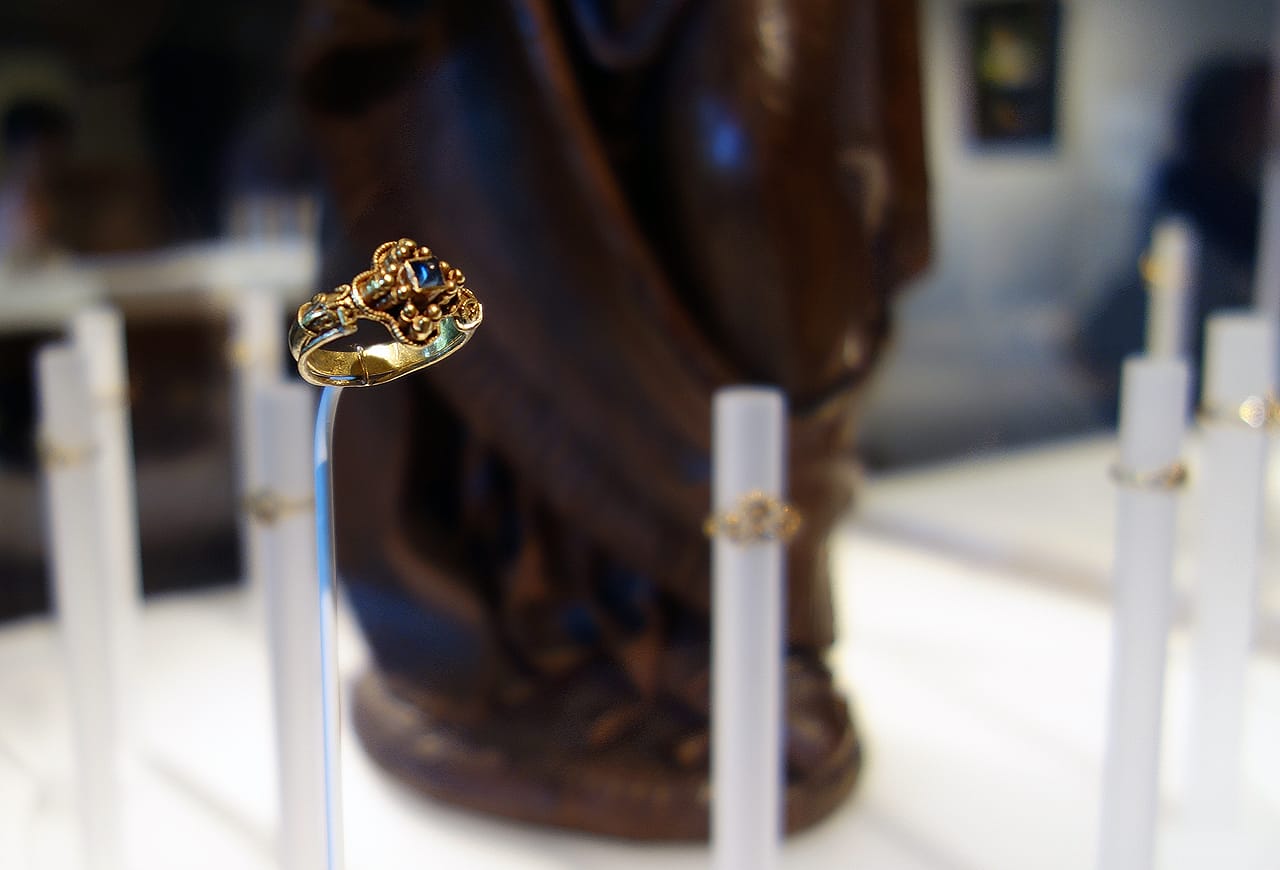


Treasures and Talismans: Rings from the Griffin Collection continues at the Metropolitan Museum of Art’s Cloisters (99 Margaret Corbin Drive, Fort Tryon Park, Manhattan) through October 18.





